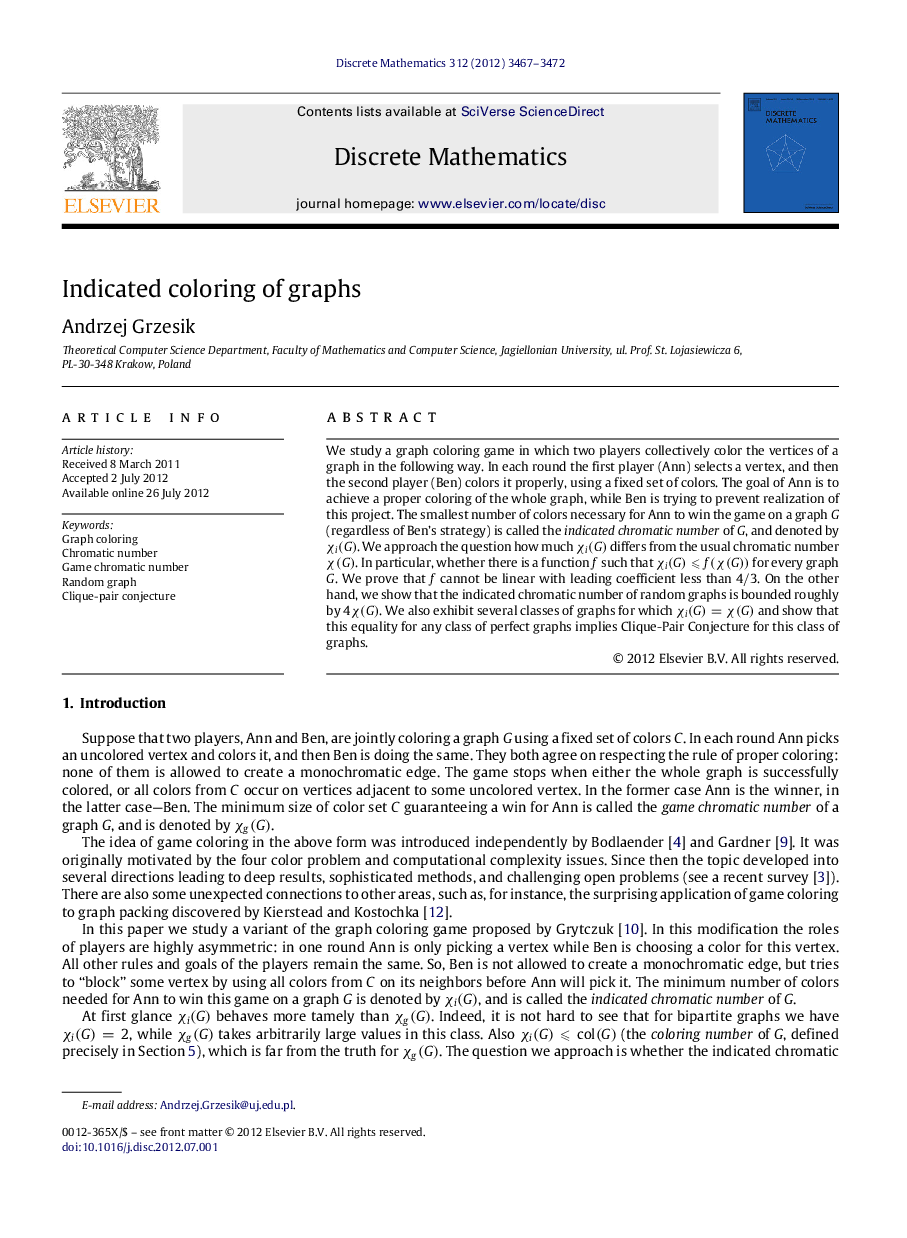| Article ID | Journal | Published Year | Pages | File Type |
|---|---|---|---|---|
| 4648081 | Discrete Mathematics | 2012 | 6 Pages |
We study a graph coloring game in which two players collectively color the vertices of a graph in the following way. In each round the first player (Ann) selects a vertex, and then the second player (Ben) colors it properly, using a fixed set of colors. The goal of Ann is to achieve a proper coloring of the whole graph, while Ben is trying to prevent realization of this project. The smallest number of colors necessary for Ann to win the game on a graph GG (regardless of Ben’s strategy) is called the indicated chromatic number of GG, and denoted by χi(G)χi(G). We approach the question how much χi(G)χi(G) differs from the usual chromatic number χ(G)χ(G). In particular, whether there is a function ff such that χi(G)⩽f(χ(G))χi(G)⩽f(χ(G)) for every graph GG. We prove that ff cannot be linear with leading coefficient less than 4/34/3. On the other hand, we show that the indicated chromatic number of random graphs is bounded roughly by 4χ(G)4χ(G). We also exhibit several classes of graphs for which χi(G)=χ(G)χi(G)=χ(G) and show that this equality for any class of perfect graphs implies Clique-Pair Conjecture for this class of graphs.
